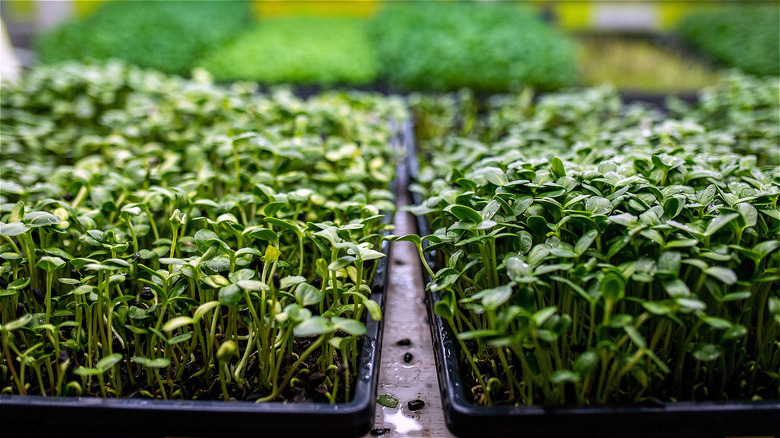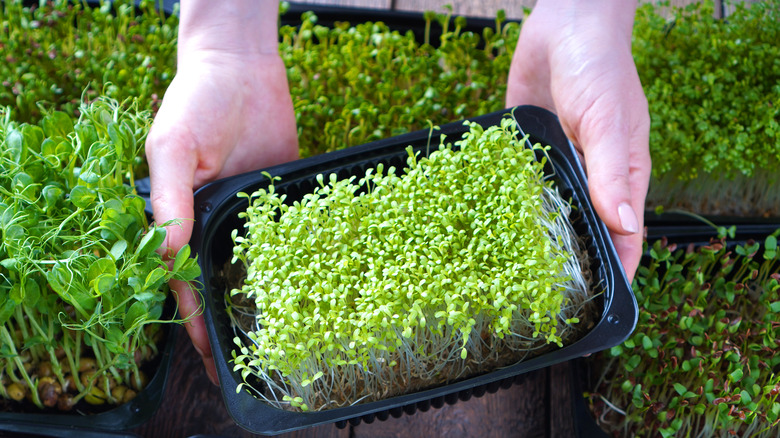Here's How Microgreens Could Help Solve World Hunger
These days, bad news seems to bombard us from every direction, so even a little good news goes a long way. You can consider the results of a 2021 Penn State study published in Acta Horticulturae, focusing on the power and promise of microgreens, as one reason to celebrate. Turns out, these little minis could have a major impact on the global food crisis and food insecurity trends long term.
The paper was written as part of a collaborative project called "Food Resilience in the Face of Catastrophic Global Events" and has since been presented at international conferences. The idea in a nutshell, as Penn State's Francesco Di Gioia explains, is to provide microgreens or distribute microgreen production kits to vulnerable populations. The petite sprouts are easy to grow, need little in terms of water or soil nutrients, and grow from seed to edible, onsite, within weeks.
The timing couldn't be better. Despite world hunger steadily declining as of several years ago, when The New York Times reported 200 million fewer hungry people in 2015 down from one billion in 1990, those gains are now in jeopardy. Economic impacts from the pandemic and Russia's invasion of Ukraine are a threat to food security around the world. Inflation is also a problem, with countries attempting to build up their domestic food supply while lowering soaring food prices to avert a food-related health crisis among their own populations.
From cute to curbing world hunger
Microgreens are just-sprouted seeds, so the vitamins and nutrients are tucked into the little leafy package in high concentrations. This makes them excellent at delivering meaningful nutrition where it is otherwise not easy to come by. The nutritional capital in microgreens is robust, and Di Gioia is not the first to consider them as a method of counteracting nutrient deficiencies in unfriendly conditions. NASA has also looked into using microgreens for astronauts in certain space missions.
That means a lot on the global front. Columbia University's Director of Agriculture and Food Security Center, Pedro Sanchez, told NPR that getting vegetables that deliver sufficient vitamins and minerals has always been more challenging than getting high-calorie carbohydrate-laden foods in the hands of those who need it most. Microgreens could be a revolutionary answer to that problem.
Microgreens are new to the culinary world, having just been popularized in the '90s when a reporter decided to highlight an isolated incident of a chef pairing a smoked maple-cured duck breast with microgreens. Not to be confused with sprouts (which only grow in water), microgreens need a growing mat, soil, or peat mix to take root. According to the Royal Society of Chemistry, broccoli, kale, and arugula are some of the healthiest microgreens, packed with carotenoids (immunity boosters plus vitamin A) and especially rich in antioxidants.

